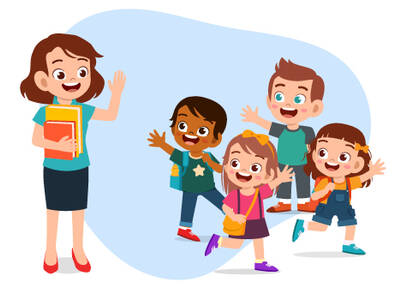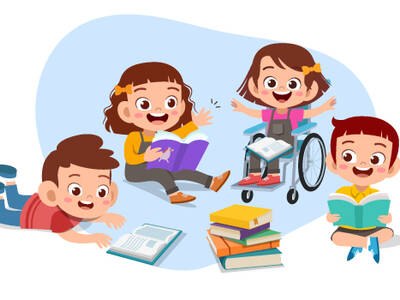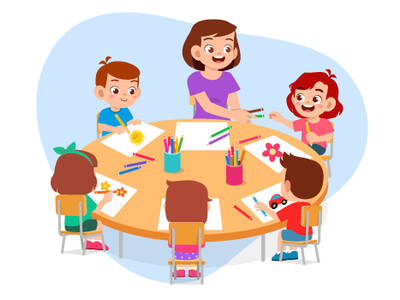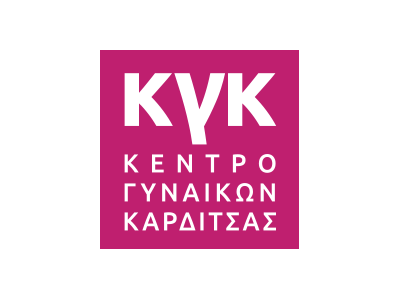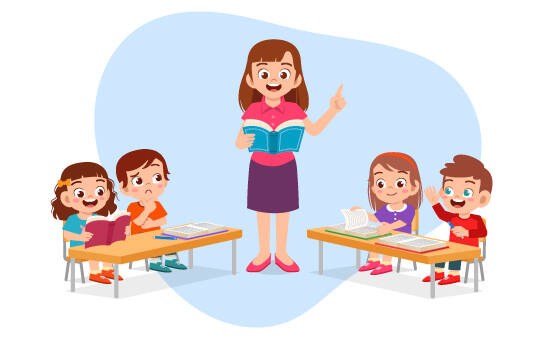
The training modules were first applied between September 2019 and January 2020 with an experimental group of children at “The Fairy Tale” Kindergarten Targovishte. The experimental group aimed to test the practical modules for introducing the topic of gender equality in preschool education, using the classic children's stories, as well as to explore the extent to which the activities in each module meet the objectives and reflect the key messages to children.
The group included 27 children aged 5-7 (16 girls and 11 boys, two of them, a boy and a girl, with special educational needs). Most of the children come from the small villages in Targovishte district, and 18 of them have a mother tongue other than Bulgarian.
Interactive methods of work were employed (brainstorming, situational games, reading fairy tales, picture tests, group discussions, etc.), and visual materials (drawings of the main characters, animated maps of various objects, presentations, stickers, dolls, etc.) were used. Discussions in small and large groups were practiced to provoke a debate that help children become more autonomous in their thinking, outside the limits set by moderators. When children reflected on gender equality, they were encouraged to think outside of gender stereotypes without fear of being ridiculed and rejected.
Methods for monitoring on process level were used by project staff (e.g. how the children reacted, whether they actively participated, their important comments or questions, what was the general atmosphere, the communication between the children, the communication between the children and the moderators).
The project team discussed in detail how each module was implemented in terms of the results it achieved: activity goals and what worked well for children, how supported they felt, what activities seemed too difficult for them, etc. These discussions would typically be held with the participation of the kindergarten director and teachers, as well as the project's pedagogical experts, who would give their professional opinion on the implementation of each module. Teacher's suggestions for improving activities' content and teaching tools were taken into consideration and a number of important changes were made as a result.
1. Adapting the modules to the understanding of children aged 5-7.
The following difficulties were singled out during the analysis and assessment of the module activities carried out at the experimental group:
• Too many tasks planned to be performed within the time slots for each training session (35-45 min);
• Using concepts that do not correspond to the children's cognitive abilities and as a result they do not understand them;
• Lack of visualizations to illustrate certain cases and situations;
• Poor combination of individual and group work at times.
The training modules were adapted in the following way:
1.1. Certain modules, the high-volume ones in particular, were structured in two parts, and could be held in two subsequent situations on two different days or on the same day, with a break in-between. This applied to modules, presenting topics such as decision-making, professional development, pay, etc. where children have limited or no experience at all. They needed to to be given more information on the topic in advance in order to enrich their knowledge and then be able to apply it in practice. For this reason, the modules were divided into two sessions: not to burden the children and give them more adequate activity preparation at the same time. The content of other modules was reduced to to fit the timeframe.
1.2. Module contents was redrafted and simplified to make it more understandable for children. Concepts that do not match their cognitive and life experience, as well as situations that they cannot imagine, were omitted. Following teachers' recommendations, visualization was designed for some of the module contents to make it more understandable.
1.3. Both individual and group work in the module activities was structured entirely at the discretion of the children's teachers on the basis of their pedagogical experience. To work more effectively with children and avoid turbulent group dynamics, activities originally designed as group were replaced by individual ones and vice versa. This further increased children's understanding and their involvement in the activities grew stronger.
2. A positive approach was applied to gender equality.
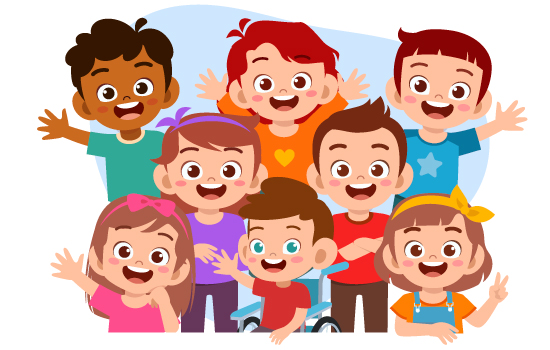
The changes we made involved reformulating the messages to children. We shifted the focus from deficits and problems to opportunities and solutions. In this way, children are given a positive example, instead of focusing on differences, injustices, negative characteristics. The idea is to present positive examples of the roles of women and men, finding the right balance between caring for others and pursuing self-improvement and personal fulfillment. We introduced a model of gender equality in sharing household/housework, in choosing a profession, receiving adequate pay for it, and participating in decision-making.
3. Linking modules to fairy tales.
Activities were changed to be directly related to the respective children's story. Children take the roles of the characters in the story, respond on their behalf, work with objects specific to a particular character.
4. Adapting logistics
The following changes were made as a result of discussions held with teachers participating in the project as leaders of the experimental group:
4.1. Following the practice of working with children at the kindergarten, three to four classes are devoted to each story. The story is to be read during class one; class two focuses on its key moments, protagonists and their qualities, lessons learnt; in class three, topics linked to the particular module are introduced, using understandable language, particularly if unfamiliar and difficult for children to understand; class four focuses on gender equality.
4.2. In modules, making use of materials unknown to children (dolls, sticks, costumes for professions, etc.), all of them should be presented in advance to help children get acquainted first and only then focus on their tasks.
4.3. Children should feel free to engage at any time during the module. Experts recommended that children should not feel pressed to answer moderators' questions. Copycat answers may turn out to be the most likely result. Practice shows that in this case the copying of the answers begins. It is advisable to invite answers from children who want to say something.
4.4. Same rules should apply during module activities as the rules followed at the kindergarten on a daily basis. The focus on models that children have already learnt to follow.
4.5. Children should be supported to express their opinions freely without fear of being ridiculed and rejected. Where possible, conditions for anonymity should be created in class, such as placing a screen in the voting module. This will protect children from peer pressure and allow them to be free to express their opinions.
5. Complex topics should be linked to concepts and situations, familiar to children in their daily lives.
Example: When it is necessary to define what is correct and what isn't, use traffic light symbols, children know them well.
Related Articles
Early childhood is a period crucial for children's physical, cognitive, emotional and personal development. At this age the…
In Bulgaria there have been fragmented attempts to work on the topic of gender equality at kindergartens. Thematic classes…
Bulgaria has ratified a number of international conventions, as well as agreements under the international human rights law.
The practical activities confirmed how spontaneous and authentic children are at this age. Prejudices and gender stereotypes…


